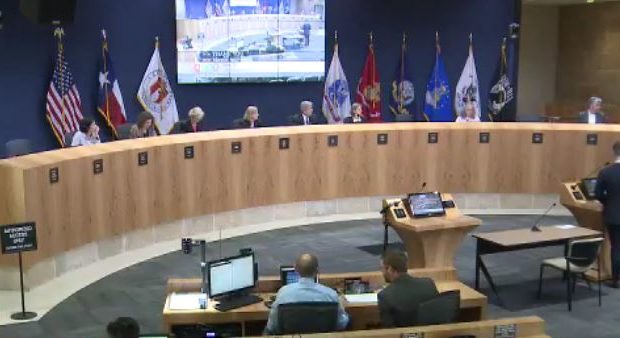Prop G’s extra Council seat could mean gridlock if strong-mayor proposal fails
Tuesday, March 30, 2021 by
Chad Swiatecki As voters ponder the eight ballot proposals they will see at the ballot box in May, City Council’s move to split the question of installing a strong mayor from the addition of a Council seat appears to have opened up a big can of “What if?”
The biggest question is what Council meetings will look like if Proposition F – which seeks to remake the mayor’s office into a non-voting top city executive – is defeated, but Proposition G – which would add a City Council district – passes. That turn of events would result in 11 Council members plus a voting mayor sitting on the dais.
The potential for tied votes, longer meetings and gridlock sits opposed to what proponents of Prop G see as the benefit of more representation for residents in a fast-growing city.
Council Member Greg Casar said he supports Prop G because of the need for more representation, but what was initially intended as a hedge against five-to-five votes in a possible strong-mayor system could lead to six-to-six votes with the mayor as a regular voting member.
The potential for ties is greatest, Casar said, in consideration of amendments and other procedural steps during Council meetings that can often come down to one-vote decisions.
“Oftentimes while a final proposal may not pass by a single vote, amendments are a majority of important votes (and) often are decided by just one or two votes,” he said.
“So having an even number of Council members makes it harder for the dais to pass proposals, when in my view we need to be doing more in city government and not less. We should avoid having an even number of Council districts, but there is no way for voters to say they want an odd number.”
Casar said tie votes are in effect a “no” vote, creating a filibuster-like scenario for controversial or high-stakes Council initiatives and potentially making Council meetings longer than normal.
“I don’t think anyone who watches an Austin City Council meeting says, ‘Hey, I want that to be a little more grueling and challenging for things to be decided,’” he said. “There’s a reason why deliberative bodies tend to have odd numbers or paths to breaking ties because that’s really important to do. I’m not a fan of the filibuster in the U.S. Senate and I don’t think we should have to have more than a majority to pass when it’s a routine item on a Council agenda.”
In February, when deciding the slate of ballot proposals, Council discussed including a Proposition I that would have explicitly amended the city charter to have an odd number of voting Council members, no matter what. That proposal was left off, creating the possibility that in 2023, voters will see a proposal to create a 12th Council district, which would bring about the third drawing of Council districts since the passage of the 10-1 Council format in 2014.
The Independent Citizens Redistricting Commission, which is responsible for drawing Council districts based on the latest census data, is in the beginning stages of its process to make a new district map by November, with the 2022 Council election as the first using the new boundaries for the 10 or possibly 11 districts.
While that commission will decide the exact shape of Council seats, political forecasters see the potential for an 11th seat that would encompass the sections of North Austin that are home to much of the area’s fast-growing population of Asian Americans.
Census data analyzed last year show that Asian Americans now outnumber Black residents, with both communities representing about 9 percent of the city’s population.
Council Member Vanessa Fuentes said she was an early supporter of Prop G, with her biggest questions about where the new district would be located and how the expenses for another Council office would be paid for.
While Fuentes now sees the difficulties that could come with ties among 12 voting members, she supports the possible addition because it would bring an elected official in closer contact with voters. “At first I saw it as leading to more of a consensus-building dais, more so than it is now,” she reflected.
“Government works best when it is closest to the people, so having another colleague who will be a point of entry and point of contact for Austinites is better for government,” she said. “It helps with providing better access to local policymakers and it’ll be interesting to see how the people vote.”
This story has been corrected to clarify that Casar was most concerned with split votes on amendments.
The Austin Monitor’s work is made possible by donations from the community. Though our reporting covers donors from time to time, we are careful to keep business and editorial efforts separate while maintaining transparency. A complete list of donors is available here, and our code of ethics is explained here.
You're a community leader
And we’re honored you look to us for serious, in-depth news. You know a strong community needs local and dedicated watchdog reporting. We’re here for you and that won’t change. Now will you take the powerful next step and support our nonprofit news organization?



